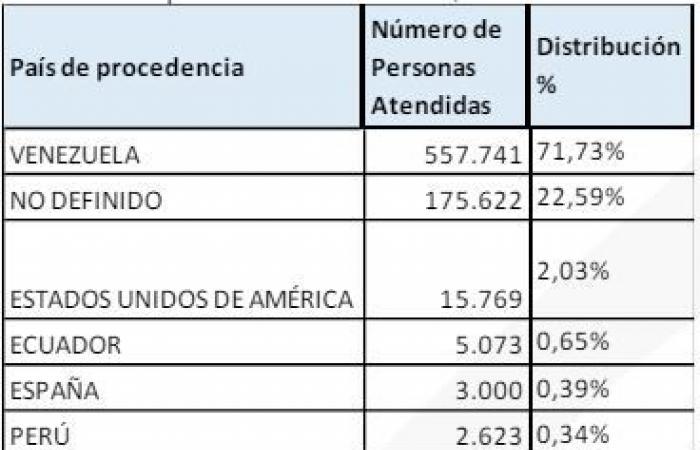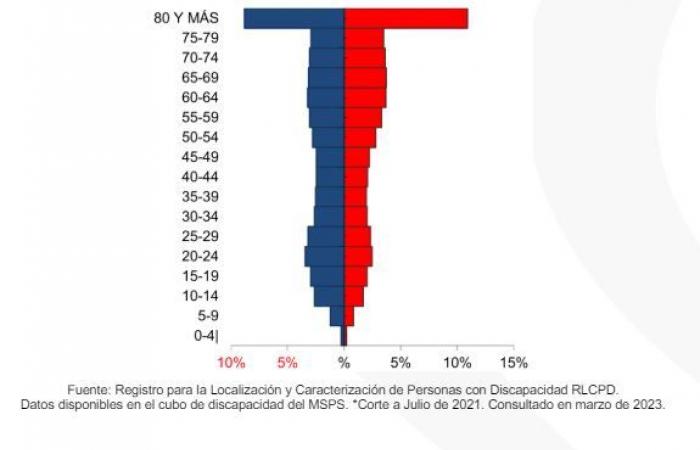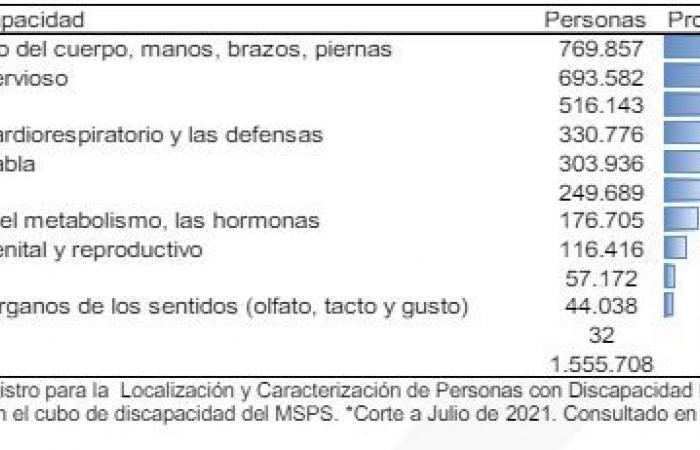At CONSULTORSALUD we launched a series of content dedicated to Colombia Health Situation Analysis 2023, better known in the sector as ASIS. In the country, the demographic context presents a unique complexity that directly impacts the accessibility and quality of health services. The distribution of the population by region and the variability in access to basic health services are key factors that must be addressed to improve the quality of life of the Colombian population.
In relation to access to basic health services, the country has significant challenges, among which high-cost events, mandatory notification events, morbidity of the migrant population and registered disabilities stand out. The current demographic panorama demands public health strategies that are oriented to the territories, specifically designed to meet the needs of the inhabitants. According to data from the Social Protection Information System (SISPRO), Membership coverage for the general population increased by 7.6 percentage points between 2013 and 2023, going from 91.7% in 2013 to 99.3% in 2023.
Although the statistics are favorable for the system, sector experts have identified a series of causes for the lack of access to health services. Among them are:
- Geographic and quality barriers appear as a cause of non-use of services among the insured; this may reflect important deficiencies in the hiring of providers by insurers, as well as the concentration of private providers in certain areas – with higher socioeconomic level and urban.
- The increasing poor quality as a reason for non-use could also be linked to the access difficulties imposed by insurers and providers in a regulated competition model, which leads to the completion of procedures or the rejection of care.
- In relation to barriers in the provision of services, there are reference studies that highlight problems linked to geographical accessibility and organizational elements, such as administrative procedures, waiting time and poor quality of care.
In 2023, the departments with the greatest coverage in the contributory regime, with more than 51.1%, were Bogotá, San Andrés and Providencia, Cundinamarca, Meta, Atlántico and Casanare. On the other hand, the departments that led the coverage in the subsidized regime, with 81.2%, were Guainía, Chocó, Vichada, La Guajira, Putumayo, Arauca, Vaupés and Risaralda.
Regarding the exception regime, the highest coverage, between 2.58% and 3.51%, was found in Vaupés, Santander, Putumayo, Chocó, Caquetá and Boyacá. It is possible that departments with less affiliation to the SGSSS face barriers to accessing health care, while those with greater affiliation to the subsidized regime reflect social and economic conditions that show vulnerability both in access to health services and in a dignified life. , recognizing the necessary requirements for it.
High Cost Events and Notification Events: What is the real burden on the system?
High-cost events represent a significant burden on the Colombian health system. These include diseases and treatments that require considerable financial and technological resources: Here are some highlights:
Cancer remains one of the leading causes of mortality in Colombia, and its treatment requires robust infrastructure and significant resources. Cancer treatment coverage has improved, but regional disparities persist. Urban regions tend to have better access to advanced treatments and diagnostic services, while rural areas still face significant barriers.
With respect to CKD, the High Cost Account registered 790,117 people with this diagnosis in 2022. The figure represents a decrease of 11.14% compared to 2021. Of the identified cases, the average was 67.56 years old and 58. 16% were female. In addition, a decrease in cases is observed in all stages, especially in stage 2 with 34.60% less and in stage 4 with 32.23% less, compared to 2021. Of the people diagnosed , 33.90% were classified in stages 1 and 2, 28.39% in stage 3, 4.09% in stage 4 and 4.54% in stage 5. It should be noted that 28.54% of the cases did not have sufficient information to determine the staging of the disease.
Other high-cost events reported are cases of HIV. Despite public health efforts, in Colombia, 12,919 cases of HIV were diagnosed between February 1, 2021 and January 31, 2022, which represents an increase of 40.27% compared to the previous period. The territorial entities with the highest number of incident cases were Bogotá, DC, Antioquia and Valle del Cauca, maintaining the trend of the previous period. Of the new cases, 58.56% belonged to one or more key population groups; the largest proportion (53.94%) identified as men who have sex with men (MSM), followed by users of non-injecting psychoactive substances (7.31%).
Expanded data for the same period indicate that 141,787 people were living with HIV in the country. The median age of prevalent cases is 38 years, with the highest frequency between 30 and 34 years. 53.75% of prevalent cases are in the AIDS stage. The territorial entities that reported the highest number of prevalent cases are Bogotá, DC (22.97%), Antioquia (17.43%) and Valle del Cauca (11.91%).
With respect to malaria and dengue, in the ASIS they are included as part of the public health phenomena in this section. In the country, malaria transmission foci persist in the Pacifica, Urabá – Bajo Cauca – Alto Sinú, Amazonia and Orinoquia regions. Since 2018, the focus of the Catatumbo region in Norte de Santander, a critical border area due to population migration, has been reactivated. The departments that most report malaria cases are Chocó, Nariño, Córdoba, Antioquia, Guainía, Amazonas, Risaralda, Norte de Santander, Cauca, Guaviare and Vichada, according to the National Institute of Health.

In 2022, the departments with the highest Annual Parasite Index, which reflects the number of cases per 1,000 inhabitants at risk, were Guainía with 93.58, Amazonas with 51.53, Chocó with 47.03, Nariño with 19.8, Guaviare with 19.56 and Vichada with 15.61.
In dengue, until Epidemiological Week (EW) 52 of 2022, 69,497 cases were reported, of them 32,516 (46.8%) without alarm signs; 35,610 (51.2%) with warning signs and 1,371 (2.0%) with severe dengue. Last year, 47% of the cases that occurred were female and 53% were male; According to the age groups, it is observed that 62.9% of the cases are concentrated in those under 18 years of age. With this information, the ASIS highlights that strategies must cover these population groups, emphasizing preventive actions that all age groups can follow.
Migrant population: is there a need for greater rigor in public health policies?
According to the Circular 029 report, Colombia registered a total of 7,932,575 health care services to 1,483,993 migrants in 2022. The largest number of services corresponded to health procedures, with 46.41%, followed by the delivery of medications, with 33.65%, and medical consultations, with 17.36%. Given this situation, the design of specific public policies is essential. According to ASIS, “52% of the care reported by health services is concentrated in the departments of Bogotá, Antioquia, and Norte de Santander, places where it is assumed that there is a greater influx of migrants”.
| Type of care | Number of people served | Number of attentions | Distribution % |
| Health procedures | 493,647 | 3,681,301 | 46.41% |
| Medicines | 280,392 | 2,669,478 | 33.65% |
| Consultations | 537,555 | 1,376,992 | 17.36% |
| Emergencies | 81,727 | 97,719 | 1.23% |
| Hospitalizations | 72,574 | 88,461 | 1.12% |
| Newly born | 18,098 | 18,624 | 0.23% |
| Grand Total | 1,483,993 | 7,932,575 | 100% |
*The same person can be treated in different types of care.
In 2022, Colombia registered a total of 789,653 care for migrants according to the social health security regime. It is important to highlight that this data differs from the number of unique people served, since some people changed their affiliation regime during the period analyzed. The percentage distribution by affiliation reveals that 30% of the care was given in the linked regime, with 237,104 migrants served, followed by the contributory regime with 167,648 people (21.2%) and other regimes with 163,621 people (20.7 %).

Access to health services for the disabled population:
Colombia’s Ten-Year Public Health Plan (PDSP) addresses differential care for people with disabilities, proposing goals and strategies that contribute to consolidating effective access to the right to health for this population group. In Colombia, the Registry for the Location and Characterization of People with Disabilities (RLCPD) reported a total of 1,555,708 people with disabilities in 2021, distributed almost equally between men and women. The most common alterations reported were in the movement of the body, hands, arms and legs (49.5%) and in the nervous system (44.6%).
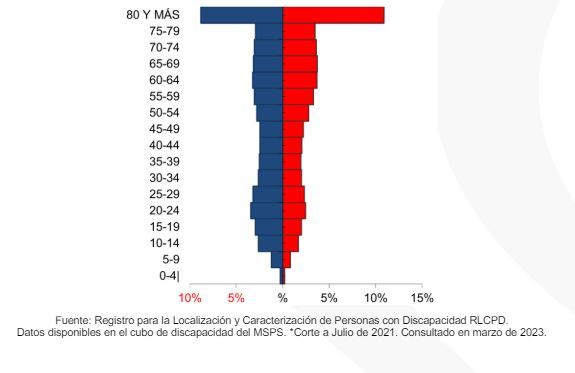
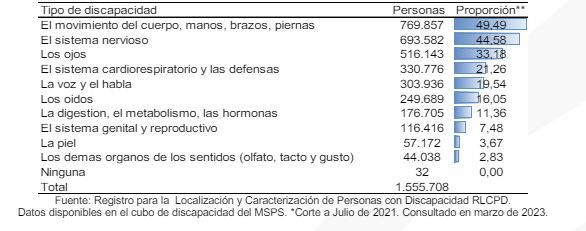
Regarding the educational level, 40.1% of people with disabilities reached basic primary education, while 30.1% have no educational level. Only 1.8% reached university level and 0.3% completed a postgraduate degree. In terms of economic activity, only 12.6% of the records include information on economic activity, with services being the most frequent occupation (2.9%). Furthermore, 10.4% of people with disabilities declared that they have dependents, and 38.4% live in their own fully paid home.
At CONSULTORSALUD, we will continue to provide information and analysis that contributes to better decision-making in public health, with the aim of promoting the well-being and quality of life of all Colombians. Expect more information about ASIS 2023 soon.


